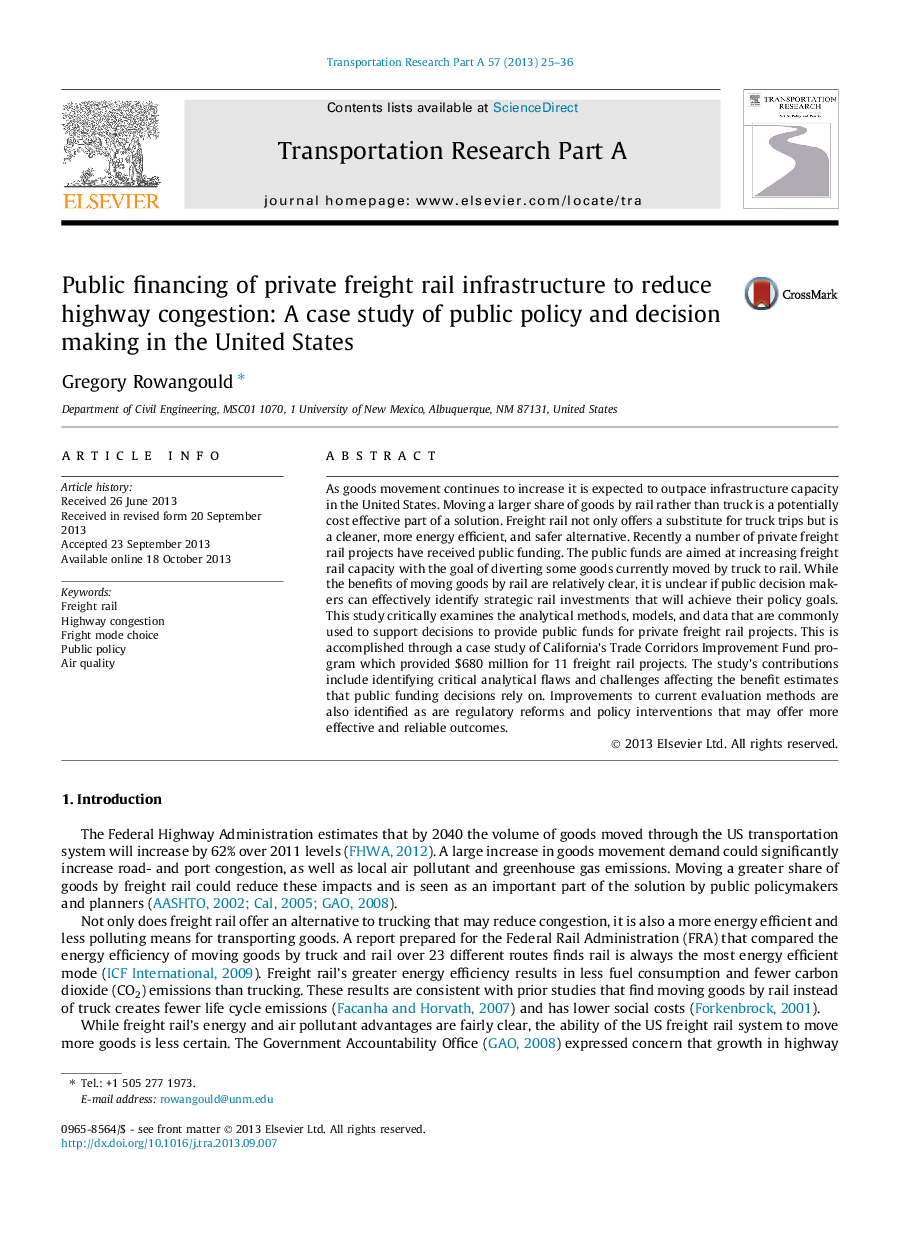| کد مقاله | کد نشریه | سال انتشار | مقاله انگلیسی | نسخه تمام متن |
|---|---|---|---|---|
| 310777 | 533365 | 2013 | 12 صفحه PDF | دانلود رایگان |

• Case study of publicly financed private railroad infrastructure projects in the US.
• Public funding aimed at reducing highway congestion and improving air quality.
• Lack of freight data and standard modeling methods pose significant challenges.
• Study discusses solutions for some of these challenges.
• Alterative policy prescriptions are more likely to achieve policy goals.
As goods movement continues to increase it is expected to outpace infrastructure capacity in the United States. Moving a larger share of goods by rail rather than truck is a potentially cost effective part of a solution. Freight rail not only offers a substitute for truck trips but is a cleaner, more energy efficient, and safer alternative. Recently a number of private freight rail projects have received public funding. The public funds are aimed at increasing freight rail capacity with the goal of diverting some goods currently moved by truck to rail. While the benefits of moving goods by rail are relatively clear, it is unclear if public decision makers can effectively identify strategic rail investments that will achieve their policy goals. This study critically examines the analytical methods, models, and data that are commonly used to support decisions to provide public funds for private freight rail projects. This is accomplished through a case study of California’s Trade Corridors Improvement Fund program which provided $680 million for 11 freight rail projects. The study’s contributions include identifying critical analytical flaws and challenges affecting the benefit estimates that public funding decisions rely on. Improvements to current evaluation methods are also identified as are regulatory reforms and policy interventions that may offer more effective and reliable outcomes.
Journal: Transportation Research Part A: Policy and Practice - Volume 57, November 2013, Pages 25–36